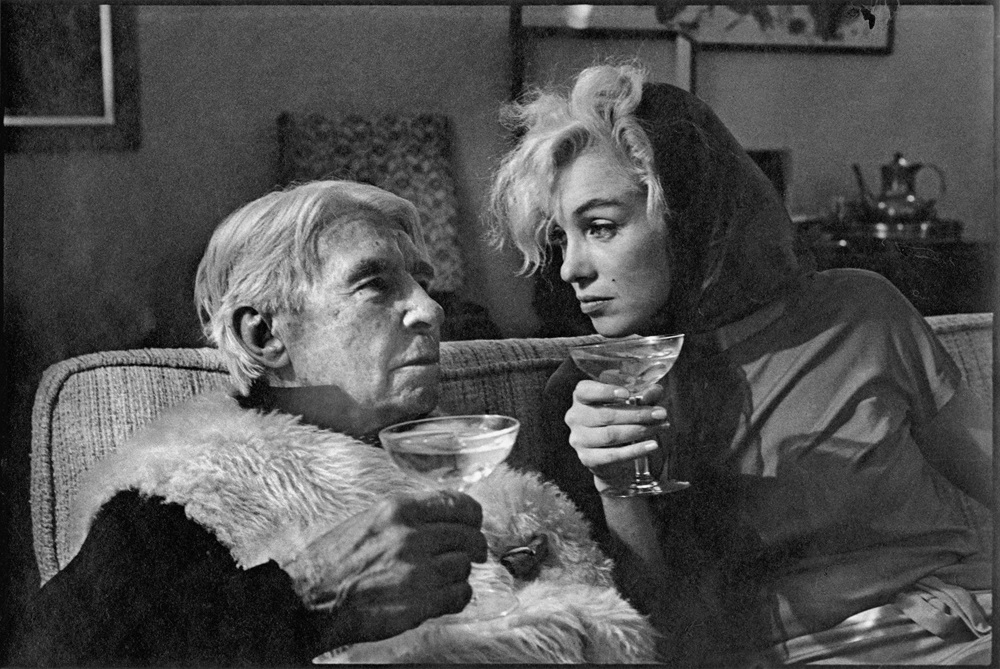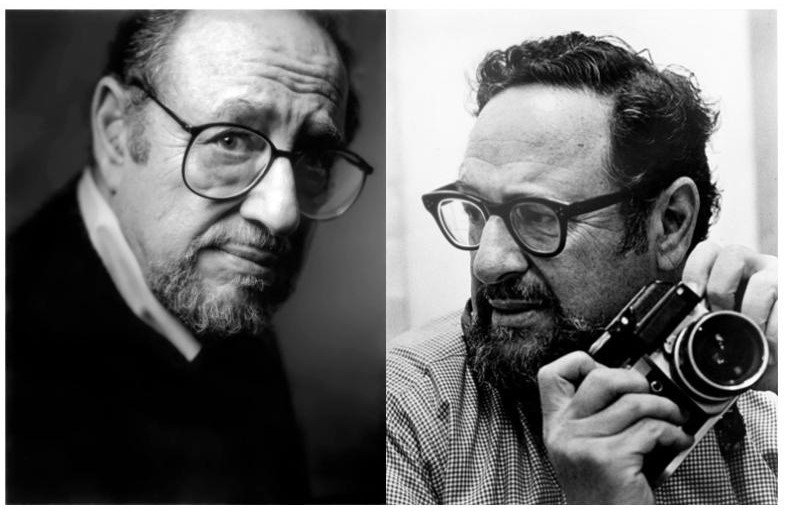Renowned American photographer Arnold Newman is well recognised for his unique approach to environmental portraiture. March 3, 1918, saw his birth in New York City, and he died June 6, 2006. By capturing his subjects in their natural settings and frequently employing dramatic lighting and composition to portray their personalities and occupations, Newman’s approach to portraiture transformed the genre.
Throughout his career, Newman took pictures of many famous people from various areas, including scientists, writers, singers, politicians, artists, and writers. His photographs frequently revealed his subjects’ inner selves and significance in their respective disciplines, capturing the soul of the subjects in a way that went beyond superficial physical likeness.

Igor Stravinsky’s piano is depicted in one of Newman’s most well-known pieces, which captures the essence of the legendary musician in his creative setting. Newman’s reputation as one of the most significant portrait photographers of the 20th century has been cemented by the numerous exhibitions and publications of his images.
“When I make a portrait, I don’t take a photograph. I build it.” – Arnold Newman
The scope of Newman’s photographic career is considered in Building Icons, encompassing his early experiments, magazine assignments, creative portraits, corporate work, and reportage projects. The show also emphasises how vital periodicals were in helping to mould Newman’s career by fostering his ambition, educating and inspiring him, and solidifying his reputation. Examining Newman’s interaction with the popular press broadens our perspective on his creations, highlights the ingenuity of his technique, and confirms his indisputable influence on postwar visual culture.
Early Period
Through his work from 1938 to 1945, Newman experimented with abstract approaches, documentary style, and portraiture. Drawing from art reviews and images by various creators, such as the Farm Security Administration photographers Walker Evans, Edward Weston, Erwin Blumenfeld, and Berenice Abbott, he blended his fine art skills with what he saw in magazines.
“I began experimenting in abstraction, abstract realism, and social realism—if one must pigeonhole definitions. I became fascinated with the control of the camera and the ability to make it see as I saw.” –Newman

1938, Newman was employed at the Philadelphia department store Lit Brothers’ photography studio. He took pictures of the streets of the city during his lunch breaks. In the studio’s darkroom, he processed his negatives during the night.
“I read and looked up everything I could find on photography, returning to its beginnings and contemporary workers. My friends produced material from their libraries and freely gave their advice and time. My interest burned strongly within. I went to museums and bought and clipped magazines like Vanity Fair” – Newman
“The portrait is a biography; facts, not fiction or romanticised visions, must be documented.” Today’s magazine contains critical visual details that will become tomorrow’s history textbook. Newman captures his subjects’ lived environments in his “integrative portraits,” also known as environmental portraits. Even though the shots seem natural, Newman deliberately sets up his subjects’ homes or places of employment to highlight a particular facet of their personalities or lines of work. He would set up elements in the background on the walls or arrange them in the foreground to create an atmosphere. Newman developed his ability to read his subjects through careful planning for his photo assignments and a keen sense of how the final photographs would appear on a magazine page.
Photographing his people at their homes and workplaces—studios, living rooms, and other natural settings—set Newman apart from his peers. Because of his methods, Newman was called the father of the “environmental” portrait, but he objected to the title, arguing that his paintings were more appropriately described as “symbolic.” He would “build” his images using the hints he discovered in his subjects’ spaces by doing prior research on them. Newman, who had to drop out of school for financial reasons, had learnt to purposely fumble around the studio or cubicle until the sitter relaxed, especially if they were frightened or reticent.
‘Arnold Newman was a large, rotund, happy man for most of his professional life. He had a beard, curly dark hair, and a penchant for cigars. He loved to tell stories, often on himself. The stories would later constitute his lectures about sitters, who were usually quirky in a very human way. The story of his life was intertwined with the stories he told. Although he was called “the father of the environmental portrait,” Newman maintained that he was not the father of something the Dutch painters had done hundreds of years earlier and that environmental wasn’t the right word. Occasionally, he even took exception to the word portrait. His grudge match with these words was a function of his belief that labels of any kind were restrictive: “The minute you put a label on something, there is no room to move . . . I never thought in [those] terms, and I refuse to think in terms [of] labels”, writes Marianne Fulton in the book, Arnold Newman: At Work.

Family is essential, as Newman has emphasised throughout his life and career. He developed ties with the spouses and children of his subjects as a result of this crucial idea. Unlike other photographers of the era, Newman often snapped additional family photos while on duty. Nearby are two pictures of American painter Andrew Wyeth: one in his studio alone, the other with his family.
Readers could comprehend the characters’ personalities and vocations because of Newman’s portraiture method, which involved posing his subjects in their homes or places of business while containing their personal belongings. This approach effectively illustrated the accompanying text on the magazine page and the corporate annual report.





